Native mixed hedgerows make excellent wildlife-friendly borders, with species like hawthorn, blackthorn, and hazel providing essential food and shelter. You’ll want to aim for at least a dozen different plant varieties in hedges at least 6 feet wide. Create multi-layered structures with flowering species like dogwood to attract pollinators and dense thorny varieties for protection. This diversity offers year-round benefits from spring blossoms to autumn berries. The following guide reveals ideal planting techniques for your living sanctuary.
Best Native Hedgerow Species for Wildlife Corridors
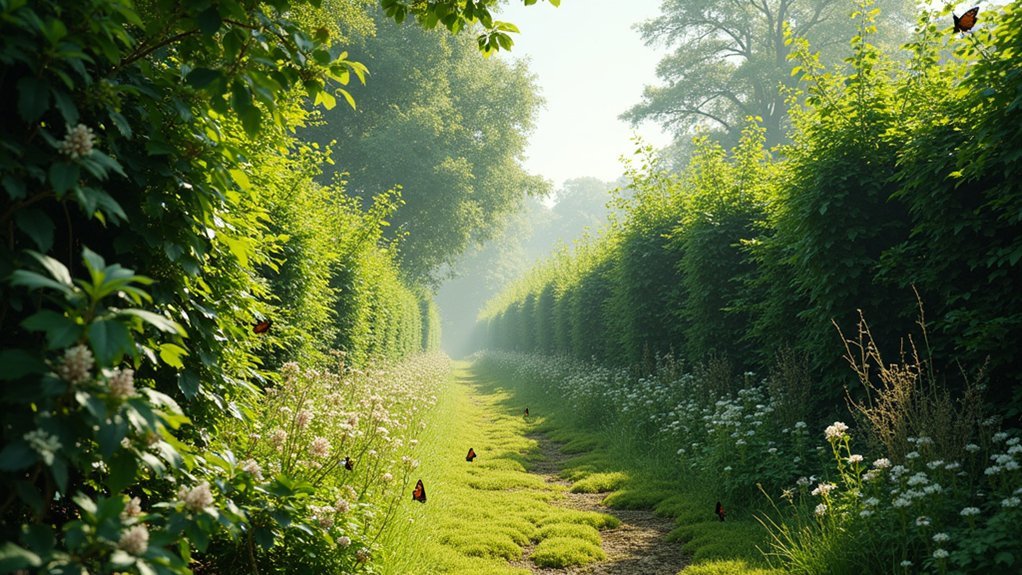
When designing wildlife-friendly borders, choosing the right native hedgerow species can transform ordinary boundaries into thriving ecological corridors. Native plants like hawthorn, hazel, and blackthorn should form the backbone of your hedges, as they provide essential food and shelter for local wildlife.
Native hedgerows aren’t just boundaries—they’re lifelines connecting fragmented habitats and offering wildlife the sanctuary they desperately need.
For maximum ecological benefit, aim to incorporate at least a dozen different species in hedgerows that are 6 feet wide or more. This diversity creates resilience while supporting migration routes for small mammals and birds.
Don’t forget flowering varieties such as dogwood and viburnum—they’ll attract pollinators throughout the growing season.
The dense structure these native plant combinations create serves dual purposes: offering protection from predators and weather while establishing safe passage routes for animals moving across fragmented landscapes.
Creating Multi-Layered Hedges for Maximum Habitat Value
Multi-layered hedges elevate simple borders into complex ecosystems that maximize habitat value for wildlife. When designing Native Hedges, aim for a minimum width of 6 feet to create adequate shelter for small mammals and birds.
Layer your hedge with diverse species at different heights—tall shrubs at the back, mid-sized in the middle, and shorter plants in front. This strategic arrangement maximizes sunlight exposure while providing food throughout the seasons.
| Layer Type | Recommended Plants | Wildlife Benefits |
|---|---|---|
| Canopy | Hawthorn, Hazel | Nesting sites, berries |
| Middle | Viburnum, Elder | Shelter, fruit supply |
| Shrub | Dogwood, Holly | Winter berries, cover |
| Herbaceous | Ferns, Wildflowers | Insect habitats |
| Ground | Drought tolerant groundcovers | Weed suppression, insect food |
Include flowering species that bloom in succession, ensuring continuous nectar sources for pollinators while suppressing weeds naturally.
Seasonal Benefits of Mixed Hedgerows for Local Fauna
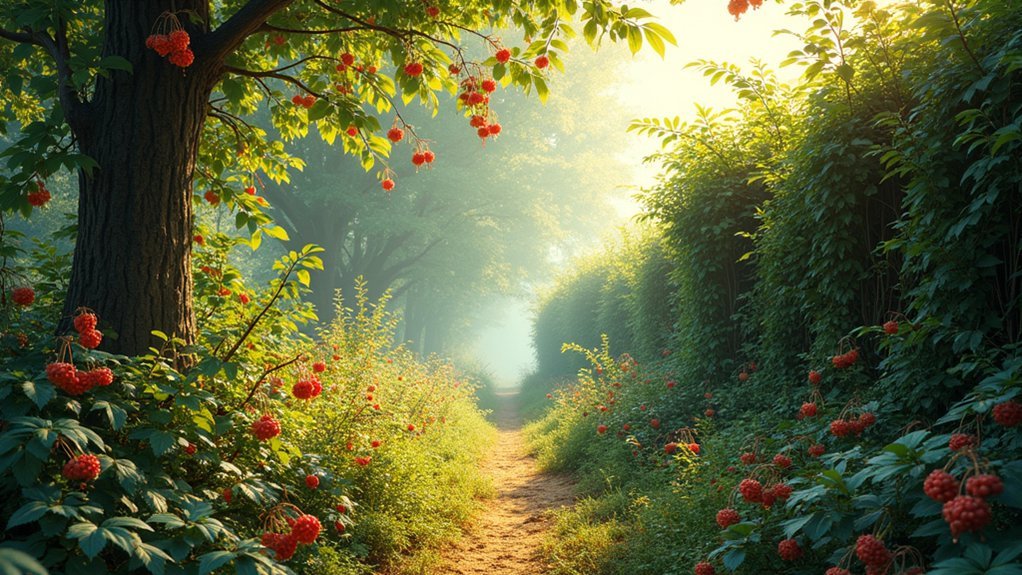
Throughout the year, mixed hedgerows transform into crucial seasonal support systems for local wildlife, adapting to nature’s rhythms in ways single-species plantings cannot.
You’ll notice how different plants flower and fruit in succession, providing a continuous source of food for pollinators in spring, berries for birds in autumn, and shelter during harsh winters.
This seasonal diversity strengthens local biodiversity, as creatures from beneficial insects to small mammals find what they need exactly when they need it.
When you incorporate native species, you’re enhancing the ecological resilience of your entire garden ecosystem.
Mixed hedgerows offer protection against predators while supporting the natural movement of wildlife across the landscape.
Planting and Maintenance Techniques for Natural Borders
Creating successful wildlife-friendly borders begins with five essential planting and maintenance techniques that guarantee your hedgerow thrives. When planting hedges, time your work for fall or early spring to give roots time to establish before summer heat arrives.
| Technique | Timing | Purpose |
|---|---|---|
| Trench preparation | Before planting | Minimum 1m wide for proper root development |
| Native species selection | Planning phase | Choose hawthorn, hazel, elderberry for local wildlife |
| Proper spacing | During planting | 30cm apart in double rows for density |
| Mulching | After planting | Suppresses weeds, retains moisture |
| Limited pruning | Year-round | Avoid March-August for nesting birds |
Remember to firm soil after planting and monitor moisture levels during the first few weeks. Incorporating at least a dozen different wildlife-friendly native species creates resilient borders that support maximum biodiversity.
Dense Thorny Varieties for Security and Animal Protection
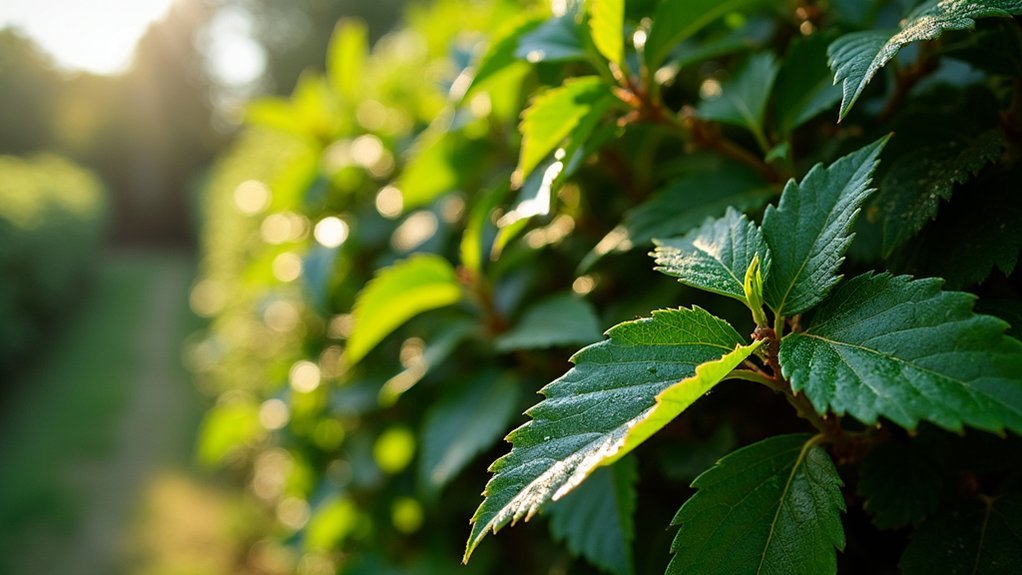
While traditional fencing often fails to provide ecological benefits, thorny hedge varieties offer both security and essential wildlife habitat in a single solution.
Dense thorny hedges like scarlet hawthorn (Crataegus coccinea) create effective physical barriers against larger animals while providing important shelter for smaller wildlife.
These protective boundaries support nesting sites for birds and create safe zones where small mammals can forage without fear of predation. You’ll find these hedges particularly valuable in spring when their flowers attract pollinators, and in fall when berries provide critical food sources.
For maximum ecological resilience, consider incorporating multiple thorny species in your hedge design. This diversity enhances the habitat value, offering varied resources that support wildlife throughout the seasons while maintaining the security benefits you need.
Frequently Asked Questions
What Is the Best Wildlife Friendly Hedge?
You’ll find mixed-species hedgerows with native plants like hawthorn, hazel, and holly create the best wildlife-friendly hedge. They provide year-round food, shelter, and breeding sites while supporting diverse species throughout seasons.
What Is the Best Border Hedge?
For a fantastic border hedge, you’ll find mixed native varieties like hawthorn and hazel work best. They’re sturdy, offer privacy, and require minimal maintenance while creating defined boundaries around your property’s perimeter.
What Is the Best Hedge to Use Instead of a Fence?
For a fence alternative, you’ll find mixed native hedges with hawthorn, hazel, and holly offer the best combination of boundary security, wildlife support, and year-round privacy while requiring less maintenance than traditional fencing.
What Shrubs Are Best for Wildlife?
For supporting wildlife, you’ll want native shrubs like common hazel for nuts, alder for waterlogged areas, holly for shelter, and scarlet hawthorn for nesting. Don’t forget to include lavender and berberis for pollinators too.
In Summary
You’ll transform your garden into a thriving wildlife corridor by selecting diverse native hedge species. Create a multi-layered border with thorny varieties like hawthorn and dog rose alongside fruiting species such as elder and blackthorn. Remember, you’re not just building a boundary—you’re providing food, shelter, and safe passage for countless creatures. With minimal intervention and seasonal maintenance, you’ll enjoy nature’s balance working right at your doorstep.



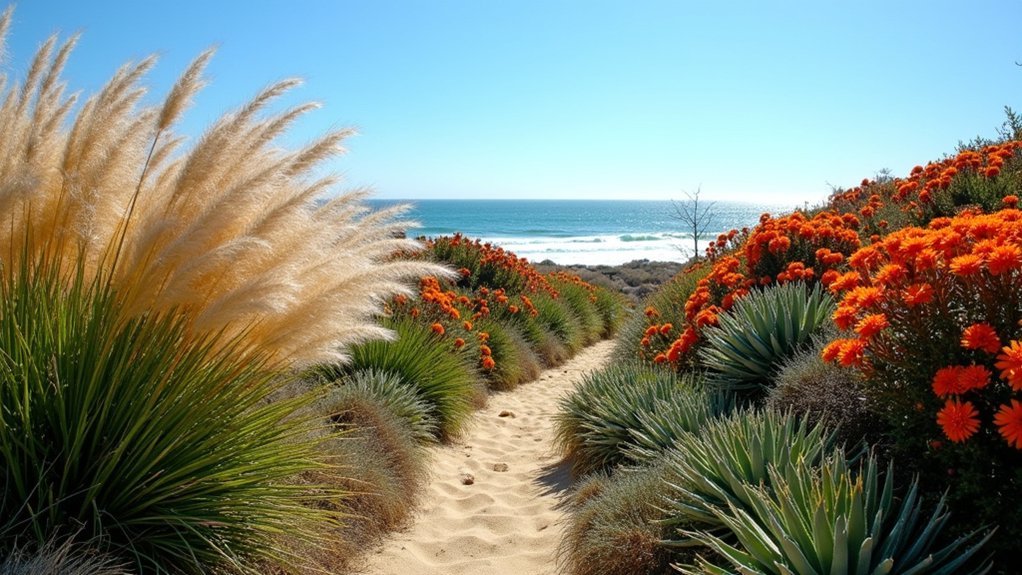
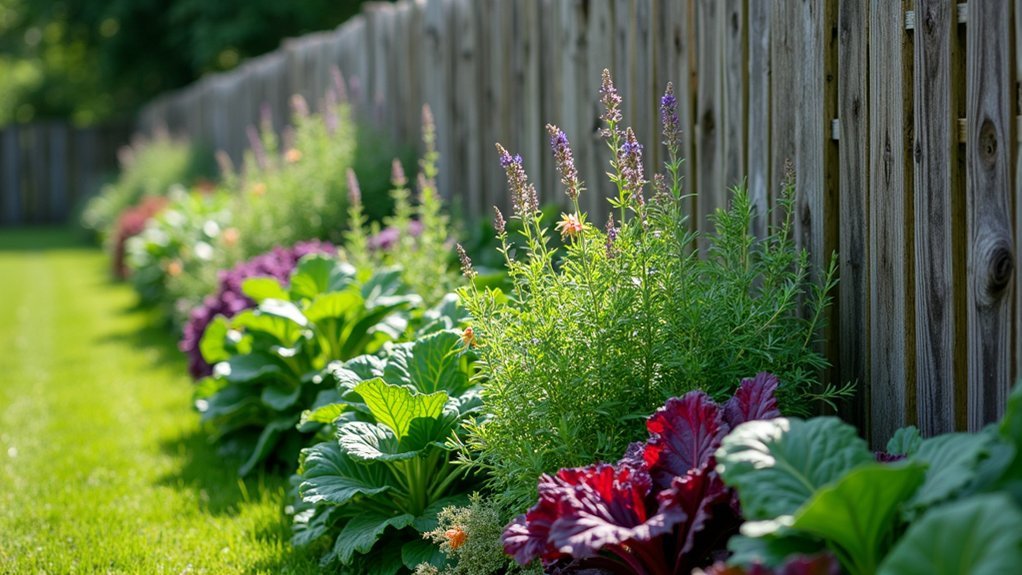
Leave a Reply